Greysheet & CPG® PRICE GUIDE
- U.S. Coins /
- Half Cents /
- Classic Head Half Cents /
-
1826 Classic Head Half Cents
Sort by
Greysheet Catalog Details
All half cents were struck at the Philadelphia Mint, so none carry any mintmarks. There was also several design changes made to the half cent during the six decades of the denomination's run.
These designs include the following types:
- Liberty Cap half cent (1793-1797)
- Draped Bust half cent (1800-1808)
- Classic Head half cent (1809-1836)
- Braided Hair half cent (1840-1857)
Numismatists generally regard all half cents as scarce, though many of the earliest dates are especially challenging, as are choice, original red specimens in uncirculated condition regardless of the date. Meanwhile, dealers and collectors who deal in circulated pieces usually prefer evenly struck pieces with chocolate-brown patina. Unfortunately, many half cents are encountered with holes, heavy scratches, and porous or cleaned surfaces. As is the case with all older copper coinage, problem-free half cents are challenging to come by and often sell quickly when offered for sale.
Important Note Regarding Early Copper Pricing: Early American copper issues (colonials, half cents and large cents) are an especially challenging area to determine and fix accurate market values. The issues listed in CDN publications represent the wholesale prices of coins that are problem free and strictly graded, especially as they compare to other examples of the same issue. Any number of factors can influence (decrease or increase) the value of early large cents, including mint-made problems (planchet flaws, poor strikes, etc.) and post-mint problems (corrosion, improper cleaning, environmental damage, and more). The prices listed here are intended to serve as a guideline and starting point for discussion and negotiations of valuation, but the CDN editors strongly encourage buyers to seek expert advice in this field before purchasing coins of high value.
Catalog Detail
Legal Disclaimer
The prices listed in our database are intended to be used as an indication only. Users are strongly encouraged to seek multiple sources of pricing before making a final determination of value. CDN Publishing is not responsible for typographical or database-related errors. Your use of this site indicates full acceptance of these terms.















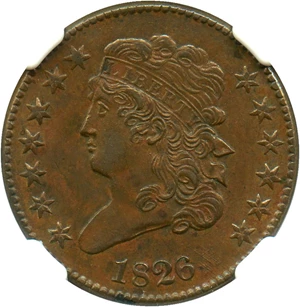

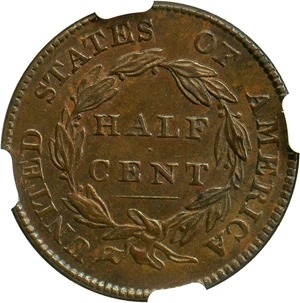
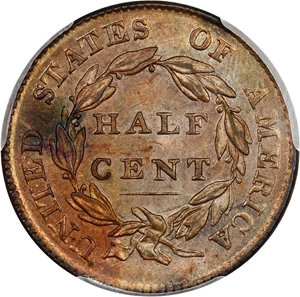
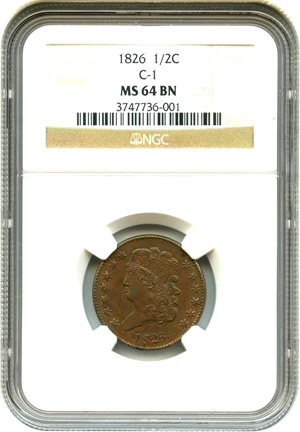
| Classic Head Half Cents | Value Range | Favorite | |||
|---|---|---|---|---|---|
| Classic Head Half Cents | Value Range | ||||
|
$51.00
-
$12,000
$51.00 - $12,000
|
||||
|
$51.00
-
$9,750
$51.00 - $9,750
|
||||
|
$51.00
-
$9,750
$51.00 - $9,750
|
||||
|
$1,500
-
$18,000
$1,500 - $18,000
|
||||
Greysheet Catalog Details
All half cents were struck at the Philadelphia Mint, so none carry any mintmarks. There was also several design changes made to the half cent during the six decades of the denomination's run.
These designs include the following types:
- Liberty Cap half cent (1793-1797)
- Draped Bust half cent (1800-1808)
- Classic Head half cent (1809-1836)
- Braided Hair half cent (1840-1857)
Numismatists generally regard all half cents as scarce, though many of the earliest dates are especially challenging, as are choice, original red specimens in uncirculated condition regardless of the date. Meanwhile, dealers and collectors who deal in circulated pieces usually prefer evenly struck pieces with chocolate-brown patina. Unfortunately, many half cents are encountered with holes, heavy scratches, and porous or cleaned surfaces. As is the case with all older copper coinage, problem-free half cents are challenging to come by and often sell quickly when offered for sale.
Important Note Regarding Early Copper Pricing: Early American copper issues (colonials, half cents and large cents) are an especially challenging area to determine and fix accurate market values. The issues listed in CDN publications represent the wholesale prices of coins that are problem free and strictly graded, especially as they compare to other examples of the same issue. Any number of factors can influence (decrease or increase) the value of early large cents, including mint-made problems (planchet flaws, poor strikes, etc.) and post-mint problems (corrosion, improper cleaning, environmental damage, and more). The prices listed here are intended to serve as a guideline and starting point for discussion and negotiations of valuation, but the CDN editors strongly encourage buyers to seek expert advice in this field before purchasing coins of high value.
Catalog Detail
Legal Disclaimer
The prices listed in our database are intended to be used as an indication only. Users are strongly encouraged to seek multiple sources of pricing before making a final determination of value. CDN Publishing is not responsible for typographical or database-related errors. Your use of this site indicates full acceptance of these terms.



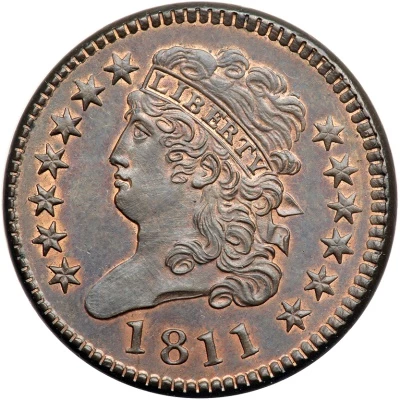






 Loading more ...
Loading more ...